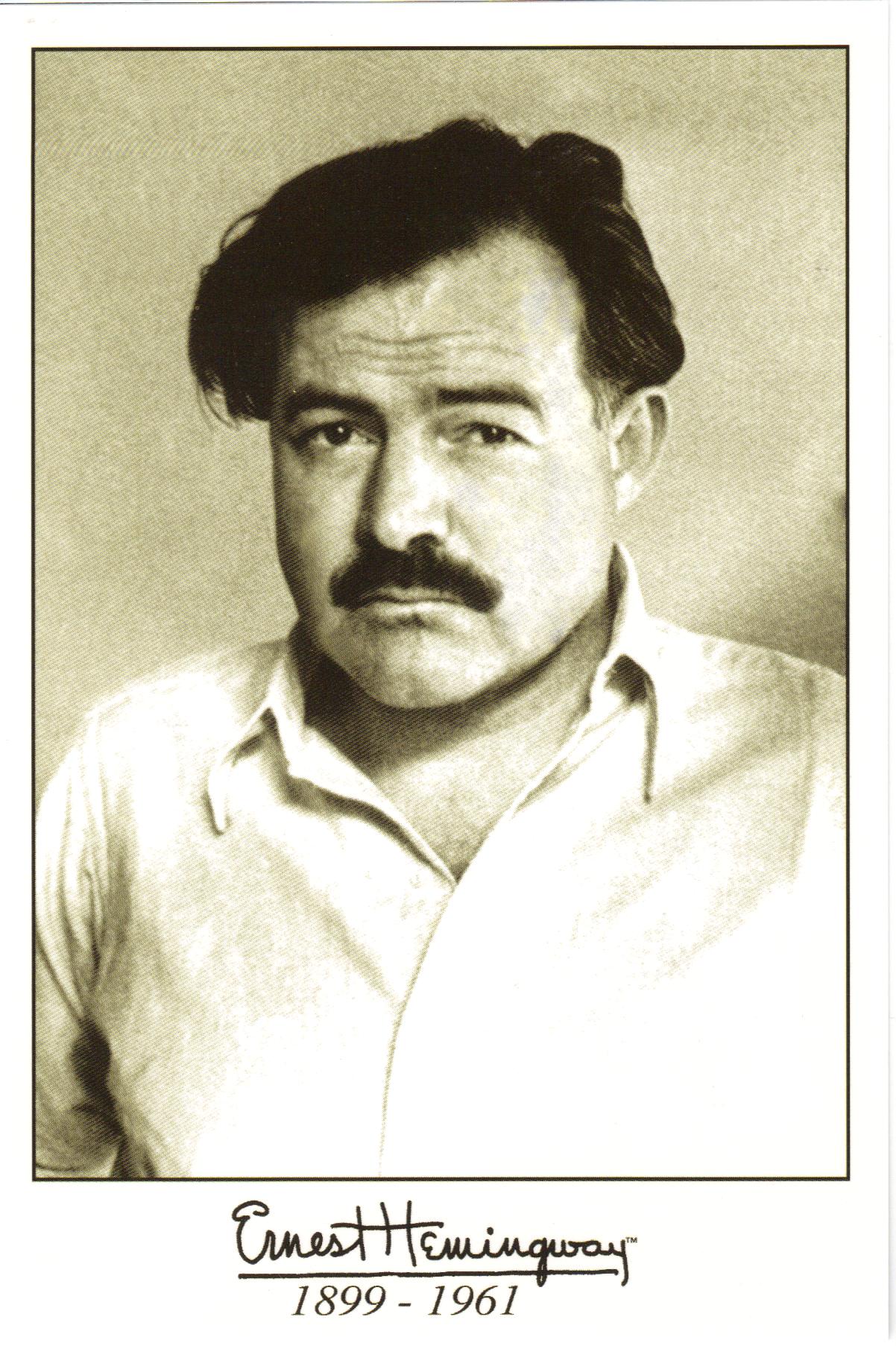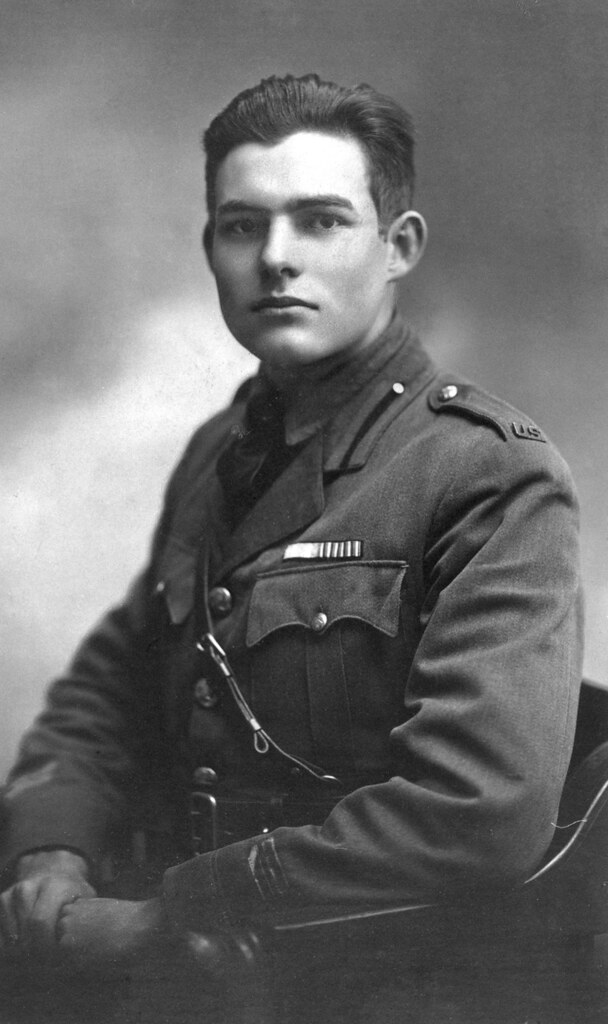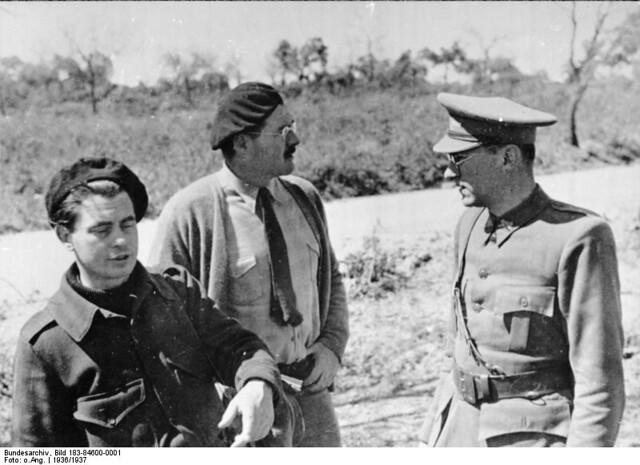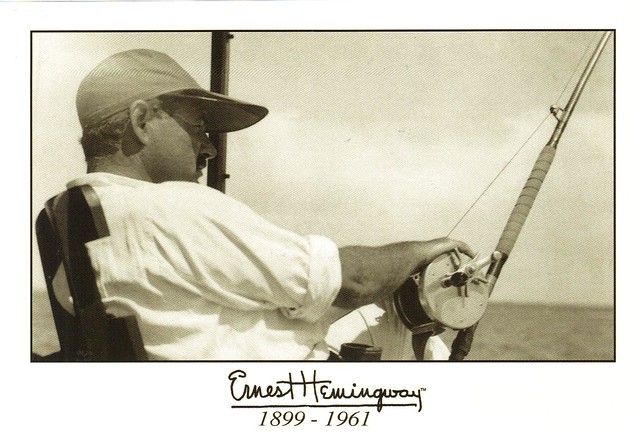
| If the implications of the sinister dimension of Hoover's FBI are not acknowledged, it is not possible to realistically assess the actual substance of the relationship between Hoover and Hemingway. There is in fact a huge gaping omission in the historical record because deception, denial, fraud and evasion has too often provided the opportunity to cover up Hoover sponsored crime. Moreover, the common tendency to ignore the significance of Hoover's ferocious, anti-Hemingway crusade certainly dulls the prospect of reconstructing the elusive truth. In retrospect, it is impossible to ignore the fact that the extreme hostility between Hoover and Hemingway drew battle lines which were clearly defined and courted predictable casualties. In particular, Hemingway despised and opposed the McCarthy-style persecutions that Hoover secretly supported, criticized the practise of using the FBI to harass American citizens without justification and was predictably "exiled" for vigorously condemning the tyranny that Hoover promoted and encouraged. Quoted in Look in May of 1954, when McCarthy was at the height of his power, Hemingway said that there is nothing "wrong with Senator Joseph McCarthy of Wisconsin that a .577 solid would not cure". McCarthy and Hoover evidently incited the worst and destroyed the best of everything they touched. Hemingway was not a gun-toting extremist. It was Hoover who induced that spirit.
Ernest HemingwayErnest Hemingway, who was born 21 July 1899 15th July 1944: American writer and war correspondent Ernest Hemingway (1899 - 1961). Original Publication: Picture Post - 1748 - Hemingway Looks At The War In Europe - pub. 1944 (Photo by Kurt Hutton/Picture Post/Getty Images) The frustration of being persecuted by Hoover's FBI had taken its toll as early as 1954, when FBI agents evidently shadowed Hemingway wherever he went. Recall that Frank Wilkinson, a relatively obscure target had as many as eight FBI agents tailing him -an internationally reputed author like Hemingway was invariably the victim of an equally outrageous degree of unwarranted, illegal surveillance. But despite the fact that he was a target of covert, illegal operations, Hemingway was provided no recourse to justice and could do very little beyond mock the "obtrusive, inescapable FBI men, pleasant and all trying to look so average, clean-cut-young-American that they stood out as clearly as though they had worn a bureau shoulder patch on their white linen or seersucker suits". Hoover used the "infallible" wing of the FBI to spy on Hemingway, and unbeknownst to agents who were simply following relatively innocuous instructions, they ultimately aided and abetted a murderer like J. Edgar Hoover. Clearly, when FBI agents placed Hemingway under surveillance to develop a derogatory profile, the plot to discredit Hemingway escalated from the effort to label him a drunk, a liar, and a Communist to the determination to declare him insane in order to justify his alleged suicide. FBI smear campaigns against Hemingway were extremely secretive because Hoover was afraid to confront him in public and public ignorance made it easy for him to promote the suggestion that Hemingway was paranoid. How, for example, could Hemingway convincingly claim that Hoover's FBI was America's Gestapo, when the FBI did not publicly demonstrate any interest in him? In the final analysis, it is the extreme secrecy that Hoover maintained which provided the opportunity to promote the claim that Hemingway was paranoid and unstable when in fact he was more reasonable and more perceptive than most. Critics who harp on common misrepresentations had a field day with the claim that Hemingway committed suicide, but they merely promoted common ignorance. Hoover had spent over a decade trying to convince anyone who would listen that Hemingway was unreliable, and it was only a matter of time before his relentless, illegal intrusions destroyed Hemingway. Having committed the unpardonable sin of challenging the infallible reputation of the FBI, Hemingway was clearly a priority target who was always shadowed by the FBI until the very day he was murdered or, as the official record dictates, "committed suicide".
"Hemingway doing something badass." American author Ernest Hemingway, who, at the time, was a reporter and paramilitary aide in the liberation of France from German occupation in World War II, is shown wearing boxing gear in July 1944. (AP Photo) In late 1960, when Hemingway arrived in New York, having left Cuba for the last time, Hemingway told his wife Mary: "They're tailing me out here already... Somebody waiting out there."9 Hoover's FBI was indeed always tailing Hemingway -a harassment that disturbed him so profoundly that he didn't even want to leave his small apartment. Hemingway's wife dismissed his legitimate concerns and developed the belief that he was "losing it". Ironically, it is the fact that Hemingway was perceptive enough to challenge unwarranted FBI surveillance which prompted the allegation that he was suffering from delusions, paranoia, fear of persecution -mental illness. But it is the people who claimed that Hemingway was unstable who were ultimately deluded. Hoover's FBI in New York had nothing better to than to tail so-called Communist subversives and prominent adversaries like Hemingway were invariably smothered by overzealous FBI agents who thrived upon the opportunity to satisfy the Director's paranoia over public literary enemy number one. Hemingway's deepest and most disturbing fear concerning the FBI was well grounded, yet he was constantly branded paranoid whenever he exposed what was essentially the truth. Perfectly logical commentary like "nobody likes to be tailed... investigated, queried about, by any amateur detective no matter how scholarly or how straight", reflected legitimate frustrations not paranoia -frustrations that Hemingway had to deal with all by himself. Even his wife and his so-called friend Hotchner, who called him paranoid simply because he acknowledged the obvious, inadvertently made it easier for Hoover to persecute Hemingway. Determined to "prove" that Hemingway was unreliable, paranoid and delusionary, the secrecy that Hoover imposed ultimately granted the opportunity to exploit the ignorance of those who did not acknowledge the threat that Hoover's FBI posed. Mary and Hotchner certainly manifested the phenomenal ignorance which shaped their frivolous perspectives:
Hemingway, who was invariably always followed by Hoover's FBI, has been posthumously vindicated. Hemingway wasn't paranoid. Hotchner and Mary were ignorant. In 1960, suffering from high blood pressure, liver and kidney diseases and haemochromatosis, a rare, chronic form of diabetes, Hemingway sought medical treatment to relieve his physical ailments. Hemingway was not, as has been frequently suggested, a psychiatric patient. Having endured a liver malady since 1937, Hemingway had given up drinking on the advice of his doctor, but by 1960, his worsening condition prompted the need for further medical attention. Thus, on November 30, 1960, Hemingway entered the Mayo clinic and hoped to return home by Christmas. Knowing that the FBI was monitoring every move that he made, Hemingway sought to enter the Mayo clinic under an assumed name to keep his visits to the Mayo a secret, but despite Hemingway's expressed orders, Dr. Rome, a psychiatrist at the Mayo Clinic, violated Hemingway's right to privacy. The FBI was carefully monitoring Hemingway's treatment at the Mayo clinic and "a letter from special agent in Minneapolis to J. Edgar Hoover on January 13, 1960 reported that Hemingway had secretly entered the Mayo Clinic and the FBI knew about his treatment." Indeed "the FBI had, in fact, tracked Hemingway to the walls of the Mayo Clinic and discussed his case with his psychiatrist." Dr. Rome was evidently cooperating more with Hoover's FBI and not at all, to the concerns of Ernest Hemingway. This direct, unethical violation of Hemingway's rights and expressed orders is directly responsible for his murder. At the Mayo Clinic, instead of treating the physical ailments that concerned him, Hemingway was given a series of electric shocks to the brain. Electro-convulsive therapy was the best-known treatment for hopeless psychiatric patients, it was not a cure for liver disease. It was, above all, an extreme, illegal, perverted effort to induce a stubborn non-conformist to become the docile and passive FBI cheerleader that Hoover demanded. Prior to having received shock therapy at the Mayo, Hemingway had never attempted suicide and had never sought out or received psychiatric treatment. Moreover, there is no credible evidence to suggest that he required a treatment as harmful and as controversial as shock therapy. When medical experts like Dr. Bonnie Burstow, an outspoken critic of ECT, describes the treatment, it sounds like the entire procedure was the ideal behaviour modification tool that Hoover spent a life time seeking to acquire. According to Dr. Burstow:
Moreover, there is absolutely no reliable evidence to even remotely suggest that Hemingway would ever submit to such a radical method of treatment. On the contrary, his lifelong scorn of psychiatrists coupled with his assertion that his analyst was "portable Corona No. 3", strongly suggests that the treatment that he received at the Mayo Clinic, a direct violation of everything that Hemingway believed in, was as improper and as unethical as aiming a gun at his head and pulling the trigger. If Hemingway cooperated with Dr. Rome, it was probably because, as Anthony Burgess has indicated, Dr. Rome "was a psychiatrist but did not present himself as one." In retrospect, the fact that J. Edgar Hoover exploited the prestige of the FBI and used the behavioral sciences to control people like Hemingway, is not at all surprising. Given Hoover's paranoia and obsessions, it is not unreasonable to assume that there exists a closet full of controversial "suicide" cases which reflect Hoover's tendency to use the influence of his "infallible" FBI to enlist the services of unsuspecting or sympathetic professionals, in his private, covert war against domestic "subversives". The two most common cases which evidently reflect Hoover-sponsored tampering are Dr. Rome who treated Hemingway and Dr. Greenson, who treated Marilyn Monroe. Hoover had essentially cultivated the extraordinary capacity to "dictate individual sanity" and that evidently intoxicated Hoover with the sense that his power was absolutely divine. Indeed, when Martin Luther King, Jr., became his priority target, Hoover's FBI actually sought to induce him into committing suicide. The astounding arrogance of the belief that Hoover's FBI could simply will King into committing suicide by promoting the belief that the civil rights champion was perverse and mentally unstable, is evidently an astonishing insight into what Hoover's FBI deemed possible -like the capacity to prompt the "suicide" of Hemingway. The bizarre plot to provoke the "suicide" of King had to be linked to previous Hoover-instigated perversions like the "suicide" of Hemingway -it just doesn't make sense in isolation. But if Hoover had made Hemingway kill himself, why couldn't he attempt to do the same to King? In the final analysis, the missing ingredient in the attempt to cause King's suicide was a "politically reliable" Doctor who could be prevailed upon to manipulate King and to maintain the level of secrecy that Hoover demanded. Indeed, without Dr. Rome, Hoover could not have possibly prompted Hemingway's "suicide" because he would have been denied the opportunity to exploit the influence of the "behavioral sciences" in the ongoing effort to "prove" that Hemingway was insane. The cooperative, extremely secretive relationship between Dr. Rome and Hoover's FBI, ultimately determined that Hemingway was hopelessly insane. In the midst of it all, secrecy is ultimately responsible for the perverted plots that Hoover managed to get away with. Secrecy provided J. Edgar Hoover the opportunity to recruit "politically reliable" doctors who did little beyond perform what they saw as their patriotic duty by taking Hoover's FBI at face value. Secrecy provided Dr. Rome the opportunity to zap Hemingway's brain with electric currents while he slept, and secrecy provided J. Edgar Hoover the opportunity to cover it all up. In retrospect, the aura of secrecy which surrounds the treatment of Hemingway is repugnant. Dr. Rome conveniently claimed patient/client privilege and refused to talk but he was evidently quite comfortable talking to Hoover's FBI about Hemingway. Despite violating Hemingway's trust by cooperating with Hoover's FBI, Doctor Rome demonstrated the shameless audacity to hide behind the censorship refrain: "I've made it practice never ever to reveal any of my contacts with Mr. Hemingway because I gave him my word when he was my patient."14 It all sounds very ethical, but under the circumstances, an orchestrated cover up is the only rational explanation which accounts for the extreme secrecy. Psychiatrist Irvin D. Yalom made a futile effort to uncover the truth, but "gag orders" effectively denied the opportunity to penetrate all the deception. Doctor Irvin D. Yalom is as specific as Rome is evasive. According to Yalom:
How convenient. Here you have the murder of an internationally celebrated genius and Doctor Rome's "lips were sealed". At the same time, while Doctor Rome distorts the truth through his refusal to tell it, he belittles the opinions of psychiatrists through arrogant commentary like "That's his opinion", and "I don't know that Dr. Robitscher ever saw Mr. Hemingway", and having been told that he had not, he pompously added, "Then that's his opinion, gratuitously." In actual fact, even if Dr. Robitscher had tried to see Hemingway before his death, he would have been denied access, and in that respect, Dr. Rome is not at all authoritative, just evasive. Indeed, even Hemingway's friend, Winston Guest, was denied access to Hemingway. According to Mr. Guest:
Mr. Guest illustrates the ease in which the assumption that Hemingway was insane was, without good cause or authority, matter-of-factly accepted. A more scrupulous analysis, offered by author Jeffrey Meyers, effectively challenged the credibility of the erroneous assertion that Hemingway was insane and highlights the simple fact that Hemingway was essentially murdered through shock therapy when he said:
When author Denis Brian asked Doctor Rome to justify repeated shock therapy treatment, he predictably said: "Unless you know the whole content of what he had... But I choose not to talk about that." To talk about the "whole content," Ernest Hemingway was obsessed by the incredible passion to live -he even gave up drinking for it. In fact, throughout his life, he repeatedly equated the act of committing suicide with cowardice, and one would really have to stretch the imagination to suggest that Hemingway was a coward. Indeed, the very thought of what he perceived to be a cowardly act like suicide repulsed Hemingway and in 1935, he clearly exposed his unequivocal, anti-suicide "crusade" when he wrote:
Having equated the act of suicide to cowardice, Hemingway was effectively immune. The ending of A Farewell to Arms, rewritten seventy times, reflects Hemingway's general philosophy:
In the final analysis, the claim that Hemingway committed suicide is patently absurd. Hemingway was in fact the last person in the world who can credibly be called suicidal. Even despair, which is commonly used to justify suicide, was a hurdle that motivated Hemingway to strive to become the very best that he could possibly be. In a letter to Scott Fitzgerald in 1934, Hemingway essentially exposed the motivation that made him both a great writer and an unlikely suicide victim, when her wrote:
Despair was never a serious obstacle, it is actually what made Hemingway put pen to paper. Living through his work, Hemingway retained his zest to live and to write for as long as he was not the victim of shock therapy. That became quite obvious in February of 1961, [after shock therapy treatment] when Hemingway tried to pen a few words to commemorate the newly inaugurated President John F. Kennedy. The month previous, an invitation to attend the Kennedy inauguration had cheered Hemingway, but he was too ill to attend. And so he continued to try to pen just a few words, to thank the new President for the invitation. Hours latter, the paper was still blank. J. Edgar Hoover had finally destroyed Hemingway's capacity to think and to write. Just a few words, any school child, gifted or not, could pen just a few words. Hemingway, the literary genius, father of A Farewell to Arms and For Whom the Bell Tolls could not pen just a few words. Hemingway was dead. It had taken a long time for Hoover to determine how to deal with a popular dissenter like Hemingway without arousing suspicion and he had finally figured it out. In retrospect, it was all a typically perverted J. Edgar Hoover plot -it was the most bizarre, unbelievable exploitation of power imaginable. The golden rule of pre-watergate, mainstream America was to obey and not to question authority and that gave Hoover's highly trusted FBI agents an extraordinary degree of power. But in the context of the abuse of power that Hoover practised, FBI agents were essentially spies who provided Hoover the opportunity to target and to scheme the murder of his enemies. Indeed, even unsuspecting FBI informants like Ronald Reagan, who spied on his fellow co-workers in hollywood and branded them Communists, ultimately furthered the perverse ends of J. Edgar Hoover. In the final analysis, the evil inherent in spying on law abiding citizens is clear. History clearly records the fact that there is very little, if any distinction between politically motivated spying and counselling to commit murder, and intelligence agencies and their informants have established an extremely deplorable record of criminal culpability. Indeed, throughout North America, the most enduring legacy that intelligence agencies have established on the domestic front is a record of excessive, unmerited use of covert action. The tragic, senseless murder of Ernest Hemingway is just one of countless cases where targets of illegal surveillance were exterminated like flies. The only reason we can determine what happened to Hemingway is that he was famous enough for people to have written books about him. Lesser targets or relative unknowns, were even easier to victimize through the power of secrecy. A staged suicide, a staged burglary, a staged car accident or any other perverted scheme that lurks in the minds of the Gordon Liddy's and the Howard Hunt's of this world, should be exposed by the vast resources of the intelligence community, they should not be facilitated. Like Hemingway, Marilyn Monroe was also a victim of Hoover's McCarthyite witch hunts. Since 1956, when Marilyn Monroe's husband, playwright Arthur Miller, was hauled before the Un-American Activities Committee to purge his so-called Communist associations, Monroe developed a serious hatred for Committee supporters like Richard Nixon and J. Edgar Hoover and she didn't hesitate to make her views known. Like Hemingway, who had lashed out at McCarthy, Monroe was livid with anger and in 1958, she blasted:
|
|
Joris Ivens, Ernest Hemingway, and Ludwig Renn (Spanish Civil War, 1937)
Ernest Hemingway fishing postcardErnest Hemingway was born in Oak Park, Illinois on July 21, 1899. In 1953, he won the Pulitzer Prize for "Old Man and the Sea" and the Nobel Prize for literature in 1954. He is considered by many to be the greatest, most influential American writer of all time.
|












No comments:
Post a Comment